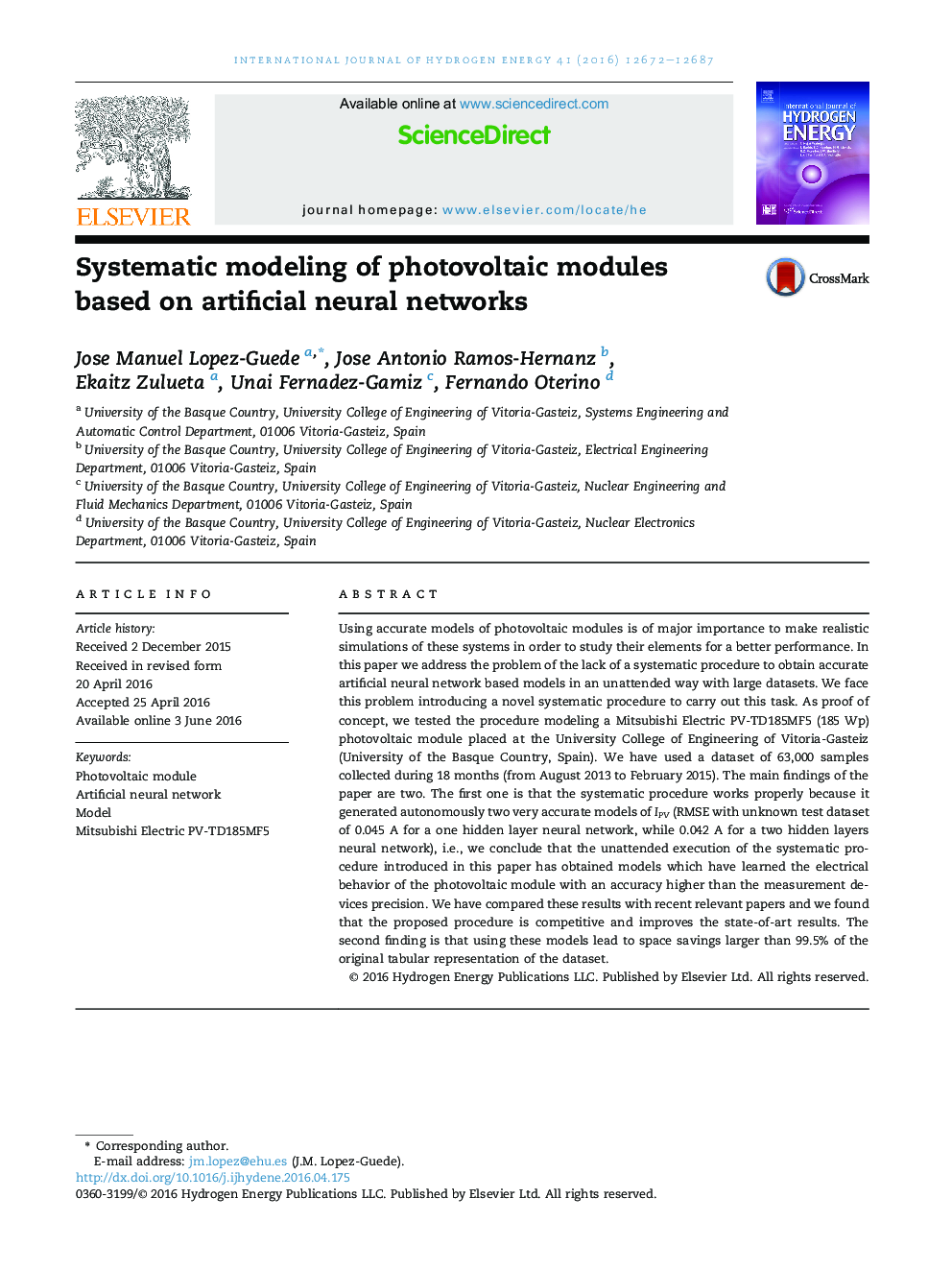| Article ID | Journal | Published Year | Pages | File Type |
|---|---|---|---|---|
| 1268385 | International Journal of Hydrogen Energy | 2016 | 16 Pages |
•The paper introduces a novel systematic procedure for photovoltaic elements modeling with artificial neural networks.•The procedure obtained autonomously two models of a prototypical photovoltaic module with an accuracy higher than the measurement devices precision.•Tests shown that it is a competitive procedure which improves the state-of-art results.
Using accurate models of photovoltaic modules is of major importance to make realistic simulations of these systems in order to study their elements for a better performance. In this paper we address the problem of the lack of a systematic procedure to obtain accurate artificial neural network based models in an unattended way with large datasets. We face this problem introducing a novel systematic procedure to carry out this task. As proof of concept, we tested the procedure modeling a Mitsubishi Electric PV-TD185MF5 (185 Wp) photovoltaic module placed at the University College of Engineering of Vitoria-Gasteiz (University of the Basque Country, Spain). We have used a dataset of 63,000 samples collected during 18 months (from August 2013 to February 2015). The main findings of the paper are two. The first one is that the systematic procedure works properly because it generated autonomously two very accurate models of IPV (RMSE with unknown test dataset of 0.045 A for a one hidden layer neural network, while 0.042 A for a two hidden layers neural network), i.e., we conclude that the unattended execution of the systematic procedure introduced in this paper has obtained models which have learned the electrical behavior of the photovoltaic module with an accuracy higher than the measurement devices precision. We have compared these results with recent relevant papers and we found that the proposed procedure is competitive and improves the state-of-art results. The second finding is that using these models lead to space savings larger than 99.5% of the original tabular representation of the dataset.
